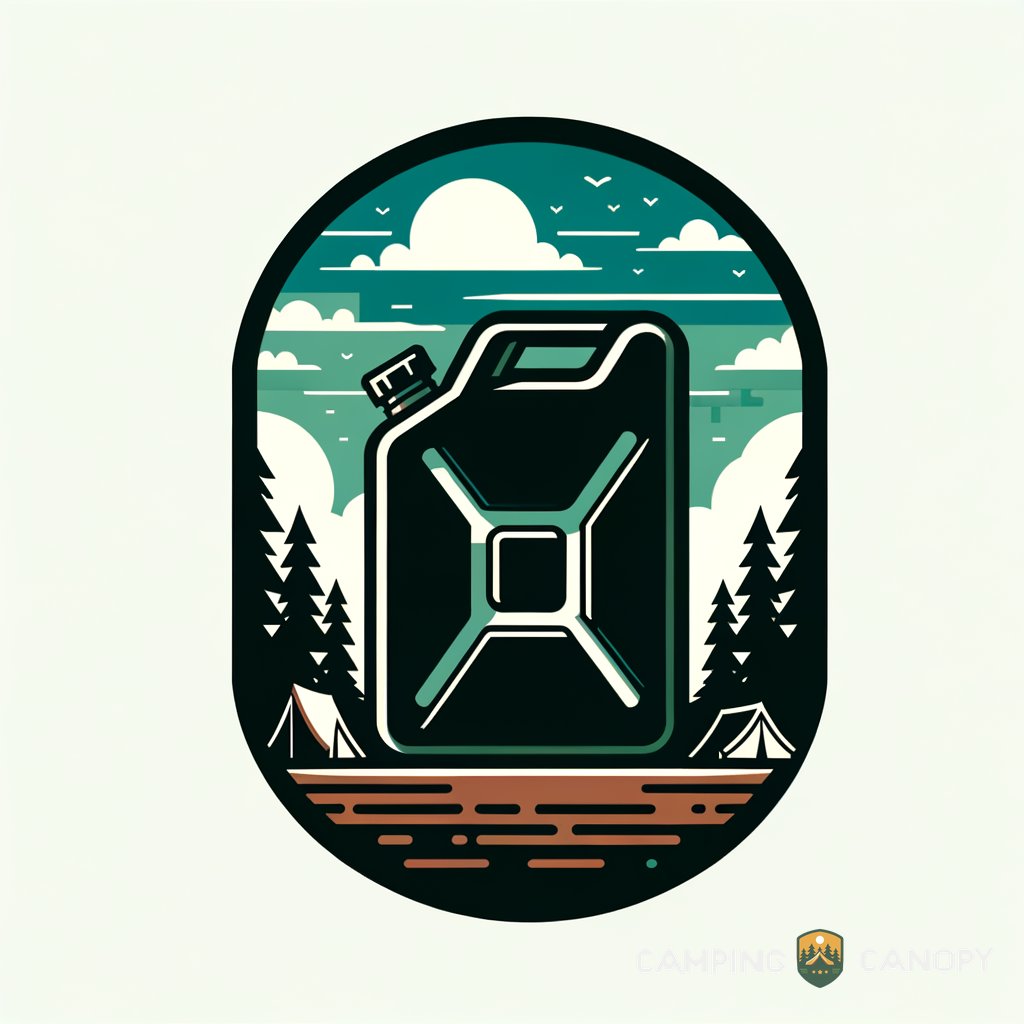Once during a hiking expedition, I stumbled upon the idea of using a jerry can for our fuel needs—it turned out to be a game-changer.
This post dives into the history, design, and modern utilization of jerry cans, helping you understand why these containers are not just ordinary items but crucial tools for efficiency and safety in various backgrounds. Discover more about outdoor essentialshere.
What is a Jerry Can?
A jerry can is a robust, portable container traditionally used for storing and transporting liquids, especially fuels such as gasoline and water. Originally designed for military use by Germany in the 1930s, the standard jerry can holds up to 20 liters of liquid. Its distinctive features include a rectangular shape, a secure cap, and a triple-handle design which allows for easier handling by one or two people.

Key Features and Design:
- Robust construction: Typically made from pressed steel or high-density polyethylene for durability.
- Triple-handle design: Enhances ease of carrying and pouring.
- Large capacity: Standard capacity is 20 liters, supporting efficient transportation and storage of liquids.
Today, the use of jerry cans extends beyond military contexts, finding applications in camping, off-roading, disaster preparedness, and more. The design has been slightly modified over the years, especially in civilian models, which might include different materials like plastics to reduce weight and cost. These modern versions still retain the practicality and durability that made the original design so valuable.
If you’re interested in other camping essentials and how they improve outdoor experiences, you might want to learn about Leave No Trace principles in camping here. Jerry cans play a crucial role in managing fuel and water needs responsibly in the wilderness, aligning well with sustainable outdoor practices.
How was the jerry can developed?
Historical origins and military usage
The jerry can was originally known as the “Wehrmacht-Einheitskanister”, designed by the Müller engineering firm in Schwelm, Germany, under the direction of chief engineer Vinzenz Grünvogel in 1937.
It was a significant improvement over previous fuel containers used by the military, eliminating the need for tools and funnels when dispensing fuel. The German military saw its advantage and started mass production in preparation for World War II, eventually stockpiling thousands across Europe.
During the war, other nations noticed the superior design of the jerry can. The Allies reverse-engineered it with minor modifications to create their own versions, helping maintain fuel supply lines efficiently across various theaters of war. Its adoption by multiple countries underscores its practical design and the crucial role it played during wartime logistics.

Adaptations and modern versions
In 1939, the U.S. encountered the jerry can when American engineer Paul Pleiss, touring Germany, acquired several examples.
Despite initial disinterest from military officials, the U.S. later revised the German design—this stipulated easier production and avoided patent infringements. The American version retained many key features, but changed some design aspects like the “X” stiffening indentations and the locking mechanism.
Post WWII, the jerry can quickly found its way into civilian use worldwide, illustrating its versatility and enduring design. Today, they are manufactured globally, using both metal and plastic, and continue to be an essential item in both military and civilian capacities, especially for efficient and safe liquid transportation.
What are the current regulations and standards for jerry cans?
Safety and environmental regulations
Jerry cans, especially those intended for fuel storage, must adhere to various safety and environmental regulations. In the United States, as of 2009, all portable fuel containers including jerry cans must comply with the Mobile Source Air Toxics regulations and the standards set by the California Air Resources Board. Plus, they need to meet the requirements of the Children’s Gasoline Burn Prevention Act.
These regulations ensure jerry cans are both safe to use and minimize environmental impact, a necessary step given the potential hazards associated with improper storage and transportation of fuels. Furthermore, the colors of jerry cans may signify their contents: red for gasoline, yellow for diesel, and blue for kerosene, following ASTM F852 standards.

UN and military specifications
Aside from civilian standards, jerry cans used in military contexts usually need to meet specific criteria outlined in defense standards. These include durability tests, capacity requirements, and compatibility with existing military hardware. In NATO countries, military-spec jerry cans usually still adhere to the original German design closely, maintaining their rugged utility and ease of use in challenging environments.
Understanding these regulations and standards is crucial for consumers and organizations to choose the right type of jerry can for their needs, supporting safe and efficient use whether in daily activities or in emergency situations. As a pivotal item for managing liquid resources responsibly, knowing these details aligns with sustainable practices as explored in elements like the Leave No Trace principles.
Innovative uses of jerry cans in various sectors
Military and emergency responses
The design of the jerry can has become a staple in modern military logistics, offering an efficient way to store and transport liquids during operations. The tough design and portability of jerry cans make them invaluable in conflict zones and emergency situations where reliable and quick access to fuel and water is critical. The presence of these cans in almost all military logistics underscores their utility and the trust placed in their design, even in the harshest conditions.
Civilian adaptations for outdoor activities
In the civilian world, jerry cans are not just for storing fuel. Campers, adventurers, and overlanders have adapted these rugged containers for water storage due to their durability and ease of transport.
This makes them especially useful for extended outdoor activities where water sources are scarce. Jerry cans ensure that enough water can be safely carried, significantly improving the logistics of camping and long-distance trekking.
Impact of jerry cans on environmental sustainability and management
Environmental considerations in manufacturing and disposal
The shift from metal to plastic in jerry can production has raised questions about environmental impact. While plastic cans are lighter and less prone to corrosion, their disposal poses significant environmental challenges. Innovations in recycling processes and the push towards using recycled materials in the manufacturing of jerry cans are ways the industry is addressing these concerns.
Role in disaster preparedness and resource management
Jerry cans play a crucial role in disaster preparedness plans around the world. Their ability to safely store water and fuel makes them vital for maintaining supplies during natural disasters such as hurricanes, floods, or earthquakes. Efficient storage and transport of essential resources using jerry cans can significantly alleviate the impact of such events on affected communities.
As we continue to explore and expand upon the utility of jerry cans, it becomes clear they are more than just containers. They are a critical component in a wide array of logistical operations, from military expeditions to disaster response strategies, providing a sturdy solution for managing vital resources across diverse environments.
Final thoughts
In conclusion, the jerry can has transcended its military origins to become a versatile tool in various sectors, from outdoor recreations to essential disaster response equipment. Its robust design and adaptive uses continue to make it a vital resource in managing liquids worldwide.
As we appreciate its historical significance and current applications, it’s clear that the jerry can is much more than just a container; it’s a critical aid in efficiency and safety across numerous contexts. For anyone keen on exploring the outdoors responsibly, understanding how essential tools like the jerry can contribute to sustainable practices is invaluable. Dive deeper into responsible outdoor activities here.















